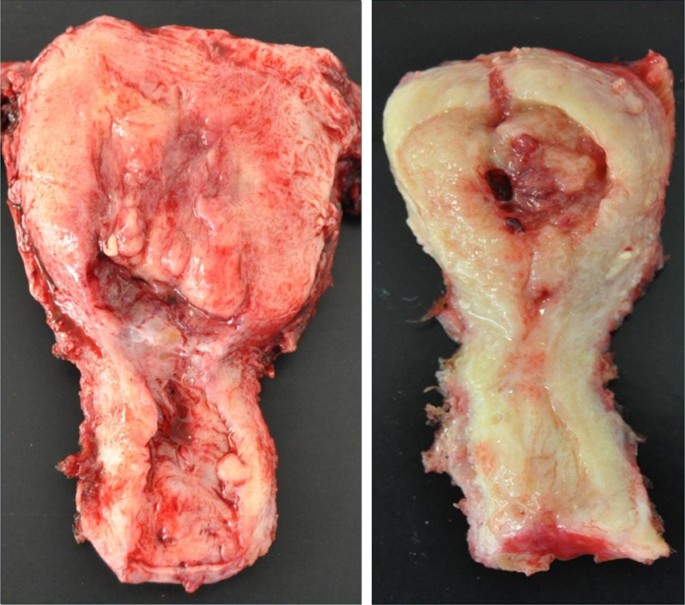Papillary Serous Carcinoma
Uterine papillary serous carcinoma is a rare form of endometrial cancer, and the endometrium is the inner lining of the uterus. It is a malignant form of a serous tumor that originates inside the uterus, and typically seen in women who are in menopause. It is also classified as type II endometrial cancer, and these cancers are more likely to spread from the uterus to other parts of the body. These types of cancers are more aggressively treated by doctors, and they are also not hormone induced Read More
Top Doctors For Papillary Serous Carcinoma Treatments
Top Hospitals For Papillary Serous Carcinoma Treatments
Papillary Serous Carcinoma
Table of contents
- What is Papillary Serous Carcinoma?
- What causes papillary serous carcinoma?
- What are the risk factors of papillary serous carcinoma?
- What are the symptoms of papillary serous carcinoma?
- How is this endometrial cancer diagnosed?
- What is the treatment for endometrial cancer?
- Life after uterine papillary serous carcinoma treatment
What is Papillary Serous Carcinoma?
Uterine papillary serous carcinoma is a rare form of endometrial cancer, and the endometrium is the inner lining of the uterus. It is a malignant form of a serous tumor that originates inside the uterus, and typically seen in women who are in menopause. It is also classified as type II endometrial cancer, and these cancers are more likely to spread from the uterus to other parts of the body. These types of cancers are more aggressively treated by doctors, and they are also not hormone induced.
Some examples of type II endometrial cancers include papillary serous carcinoma, clear cell carcinoma, undifferentiated carcinoma, and grade III endometrioid carcinoma. These cancers do not look like normal endometrium and are also referred to as high-grade or poorly differentiated cancers.

What causes papillary serous carcinoma?
The exact cause of papillary serous carcinoma is unknown. However, it is known that something happens that creates changes or mutations in the DNA of the cells in the endometrium. These mutations turn normal and healthy cells into abnormal cells. While healthy cells grow and multiply at a definite rate, eventually dying after a set time, these abnormal cells grow and multiply in an uncontrolled manner, and they do not die at a set time. The accumulating cells form a mass which can also be called a tumor. These tumors invade tissues that are nearby and can also even separate from the original mass and spread to other parts of the body.

What are the risk factors of papillary serous carcinoma?
The cancer is more common in women who are black, with average weight and are in their menopause. There are several gene mutations that are common with this disease. Also, women that have this cancer are more likely to have relatives who also have or have had endometrial, ovarian, and pancreatic cancers. Some other risk factors are advancing age, tamoxifen usage, infertility, personal history of polycystic ovary syndrome or atypical endometrial hyperplasia, etc.
What are the symptoms of papillary serous carcinoma?
Some of the symptoms of carcinoma include:
- Abnormal bleeding or discharge
- Postmenopausal bleeding
- Pain during intercourse
- Pain or difficulty when urinating
- Pain or mass in the pelvic area
How is this endometrial cancer diagnosed?
The diagnosis of endometrial cancer includes a general medical review as well as a complete taking of the patient’s medical history. The diagnostic process might also have one or more of the following:
- Internal pelvic examination – this is done to examine and find any abnormalities or changes in the shape of the uterus.
- Pap smear – this test involves the microscopic examination of the cells that have been collected from the cervix. It is used to detect changes that may be cancerous or that may lead to cancer and also determine if they are not cancerous and are caused by inflammation or by an infection.
- Endometrial biopsy – this is when a small and flexible tube is used to collect tissue samples from the uterus. The tissue sample is then examined under a microscope to see if there are any abnormalities with the tissue, like cancer. A doctor in a hospital usually does an endometrial biopsy.
- Transvaginal ultrasound – this uses a small instrument also called a transducer. The transducer is placed in the vagina to produce images of internal organs. The doctor may then carry out an endometrial biopsy if the endometrium looks too thick on ultrasound.
- Dilation and curettage – this is commonly referred to as D&C. It is usually recommended when a biopsy is not possible or if further diagnostic information is required. It is a minor procedure where the cervix is dilated in order for a curette to be passed through the cervical canal into the endometrium. The curette is then used to scrape the uterine lining, and tissue is then collected. A doctor examines the tissue to detect any sign of cancer.
What is the treatment for endometrial cancer?
The treatment of uterine papillary serous carcinoma starts with a hysterectomy, which is the surgical removal of the uterus. The surgeon will also remove any nearby tissues affected by cancer, like the ovaries, the oviduct, the lymph nodes, etc. They then test these tissues to determine the stage of cancer. The cervix and even the upper vagina may be removed in the case of stage II cancer.
After the surgery, the next step is radiation therapy, chemotherapy, or a combination of both. Targeted radiation is used to treat localized cancer in order to prevent remission; this is not an effective standalone therapy. Radiation may also be carried out through an external beam or brachytherapy (this is when a tiny radioactive cylinder is placed in the vagina in order to kill cancer cells). A combination of external radiation beam and brachytherapy may also be used.
Chemotherapy is used even in the early stages of the disease. They are also used to kill off the remaining cancer cells in the body after the surgery has been carried out. Targeted therapy is another method of combating this disease. In some cases of UPSC, a gene called HER2/neu replicates itself a lot, and a drug is used to target and block this gene. Other targeted therapies are also becoming popular as researchers discover more pathways of the disease and produce ways to block those pathways.
Life after uterine papillary serous carcinoma treatment
After the treatment, it is usually advised to do a regular health check-up with your physician in order to check for signs of cancer returning. It is recommended to contact the doctor immediately if the individual notices any return of the symptoms like bleeding from the vagina or rectum, unusual and unexplained weight loss, pelvic pain, swelling in the legs or abdomen, etc. it is also known that uterine papillary serous carcinoma comes back, even in the event that it is caught early. After the treatment, a healthy lifestyle can improve the quality of life of the individual. Care should be taken on the consumption of harmful substances like alcohol or smoking. It is also advisable for the individual to exercise regularly, as it helps in the recovery from cancer treatment.
































































































